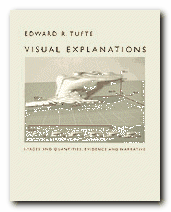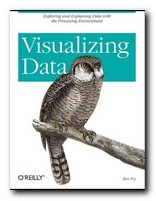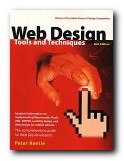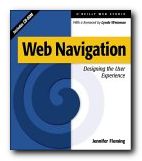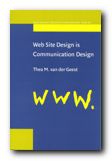the techniques, philosophy, and interpretation of comics
Whenever there is a discussion or an exchange of messages concerning comics or visual narratives, one name crops up again and again – Scott McCloud. Understanding Comics is his now classic work on the comic designer’s art. It’s presented in the form of a comic itself – but don’t let that fool you. He could just as easily given his book the sub-title ‘The Philosophy of Graphic Narratives’. He starts with a chapter defining what comics are (sequential visual art) and shows something of their history, going back as far as Egyptian wall paintings in 1300 BC.
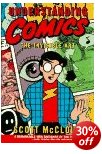 If at first this seems rather obvious or over-simplified, two or three pages into chapter two, he is discussing the theory of visual perception and the nature of iconic language. Next comes the sequencing of action and the decision of what goes into (and what can be left out of) each visual panel of a comic. There’s a very interesting comparison of American and Japanese techniques in which he argues that some of the special effects of the Manga comics arise from different traditions of perception in the East.
If at first this seems rather obvious or over-simplified, two or three pages into chapter two, he is discussing the theory of visual perception and the nature of iconic language. Next comes the sequencing of action and the decision of what goes into (and what can be left out of) each visual panel of a comic. There’s a very interesting comparison of American and Japanese techniques in which he argues that some of the special effects of the Manga comics arise from different traditions of perception in the East.
He explains the depiction of time and motion via the panel or frame. In fact after doing the same thing for emotion by the use of symbols, he extends his argument to claim that we are in an age where a whole new visual language is in the process of being invented.
The traditional modes of dealing with narrative via showing and telling are demonstrated by the same story being related via pictures and words, then re-combined to show the comic creator’s skill in offsetting one medium against the other to avoid tautology and maximise expressive density.
This is a book which will entrance any comic lovers or anybody who has an interest in media studies or how ideas and stories are transmitted.
Quite a lot of these issues of graphics, narrative, point of view, and are now an active part of online, web-based information. I’m sure he will be aware of that, and I’m sure he will take it into account in any future editions.
He ends with what is obviously a heartfelt plea that comics should be taken seriously as a cultural genre, and he extends this to claim that they haven’t yet even scratched the surface of what they are capable of expressing.
© Roy Johnson 2000
Scott McCLoud, Understanding Comics, New York: HarperCollins, 1994, pp.217, ISBN 006097625X
More on art
More on media
More on design
